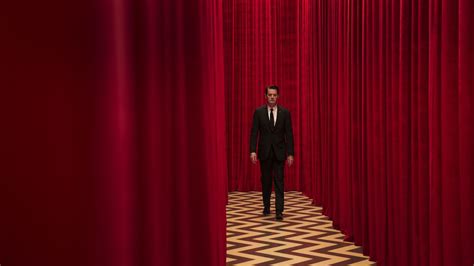
I’ve spent more time with Twin Peaks than any other art work. I’ve watched the series multiple times since its first release in 1991 and still find mysteries to explore. Last year, on a rainy walk, John Higgs recommended a 4 1/2 hour YouTube video about Twin Peaks that would explain the show. I was sceptical, but gave it a try.
The video begins with a spoiler warning, both for those who have never seen the show and those who know it well. It promises a unifying theory that explains all of it, from the fish in the percolator to the white horse. And it comes pretty close.
Over almost 30 years, I’ve turned this series round in my head, trying to understand it. Even with the help of these YouTube videos, I expect to be wrestling with it for decades longer. The most remarkable thing about this video is not that the theory is correct, but that it is possible someone could build a complete theory around such a complicated and symbolic show.
(From this point in my post, spoiler warnings are in effect, both for Twin Peaks and the video).
The idea of Twin Peaks as a critique on TV is obvious, from the soap-within-a-soap of Invitation to Love to Sam and Tracey watching “The Box” in Season 3. The play with Pittsburgher David Lynch, director of Twin Peaks, playing the FBI director from Pittsburgh was so foregrounded that I actually missed it. What this video did was to take this as an overarching principle and demonstrates how many things could be tied back into it.
Some of the claims and theories made sense. Throughout the show, Lynch is uncomfortable with the idea of a vicious sexual murder driving a mystery to titillate audiences who are watching over a TV dinner. While Lynch doesn’t always handle Laura Palmer’s role gracefully, he is aware of the issues (even as the show sometimes crassly mishandles gender and race).
One of the most interesting things is how Lynch fights against closure. During season three I was troubled by how mundane the explanations about Judy/Jowday were. Lynch kept trying to wrong-foot the viewer throughout the series, and Judy was part of this. That entity was an embodiment of explanation: removing all the mystery from Twin Peaks would destroy it.
I think that the character of Freddie Sykes, with his green glove, is another embodiment of frustration with closure. Sykes is ludicrous and out-of-sorts with the rest of the show’s tone, his origin story as ridiculous as that of any Jack Kirby superhero. And he finally defeats Bob by punching him into non-existence. This resolution has occurred several times in the Marvel Cinematic Universes. It’s not very interesting.
In that final confrontation scene with Bob, Lynch gives the fans what they think they want: Cooper sweeping in to the rescue. He has his reunion with the sheriff’s department (with Frank standing in for his brother, Sheriff Harry S. Truman). And Lynch shows us how hollow that resolution is.
The video was powerful, but also inspiring – about how a work of art could be intricate enough to support this level of interpretation without falling apart. But it didn’t provide me with the triumphant closure it warned me against.
Back when I was seventeen, I dreamed about meeting David Lynch. I asked him, “Is Bob an angel?”, and he told me I’d grasped the key to the show. Even as this video tries to explain anything, my personal interpretations (“unverified personal gnosis”) still stand. I suspect I’ll be turning over the mysteries of Twin Peaks for the rest of my life.